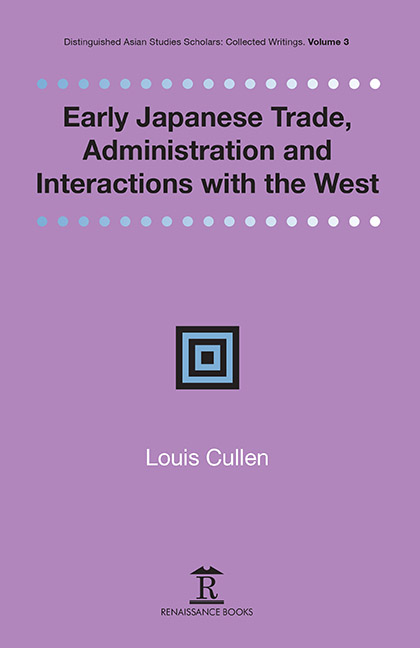6 - Population: Tokugawa Population: The Archival Issues
Published online by Cambridge University Press: 30 April 2022
Summary
WHILE THE SURVIVING Tokugawa demographic data have been brought together in a number of studies, notably in Sekiyama's work published in 1958, the sources themselves as an archival residuum – as opposed to the actual figures contained in them – have never been analysed systematically. Scholars have ascribed primacy, as a source, to Suijinroku, published in 1890 by Katsu Kaishū, who had served both as a bakufu and Meiji government official. In addition, historical population research has proceeded on the assumption that Tokugawa secrecy policies were effective and resulted in a lack of circulation of information. For the han, some knowledge exists of how census returns to the shogunate were compiled. Processing by the shogunate is totally obscure. Apart from converting han data into kuni equivalents, no adjustments seem to have made by shogunal officials to the han figures, which thus retain both the uncertainties associated with the raw returns and the original variations in coverage. Of the surviving summary tables for individual census years over the signature of an ōmetsuke and a kanjō bugyō, a mere four can be regarded as compete copies. Moreover, surviving returns are not official documents (or copies by officials acting in an office capacity), but copies made privately, often from existing private copies. Copies usually relate to a single census, and a mere five or six examples incorporate data from more than one census. Time series of census data were unknown, and the long table of Osaka population constructed by a machi bugyō named Isshiki, who drew on registration data, is unique.
This paper originated in a study of Tokugawa statistics as part of a wider study of administration in the key 1790–1853 period when Japan showed that to a degree it could strengthen its institutions, and when the prompting came from the fear of a foreign threat. While they do not relate directly to a foreign challenge, statistical sources are important in terms of assessing the nature of administration, and they also throw light on an important issue, i.e., the assumed hermetically sealed and secretive nature of government. In fact, administration was open in the sense that information was disseminated quite widely though privately.
While the surviving Tokugawa demographic data have been brought together in a number of studies, the sources themselves, as opposed to the actual figures, have never been analysed systematically.
- Type
- Chapter
- Information
- Publisher: Amsterdam University PressPrint publication year: 2020



